Creating a shade garden can be an immensely rewarding endeavor, especially in New England where the lush undergrowth thrives in the cooler climate and wooded areas. A well-designed shade garden not only adds visual interest but also provides a peaceful sanctuary filled with a variety of plants.
In this guide, we will explore some of the most beautiful and resilient shade garden plants that are perfect for New England gardens. Whether you’re a novice at gardening or an experienced green thumb, this post will inspire you to create your very own lush, leafy paradise.
Actaea simplex (Atropurpurea Group) ‘James Compton’ (Baneberry)
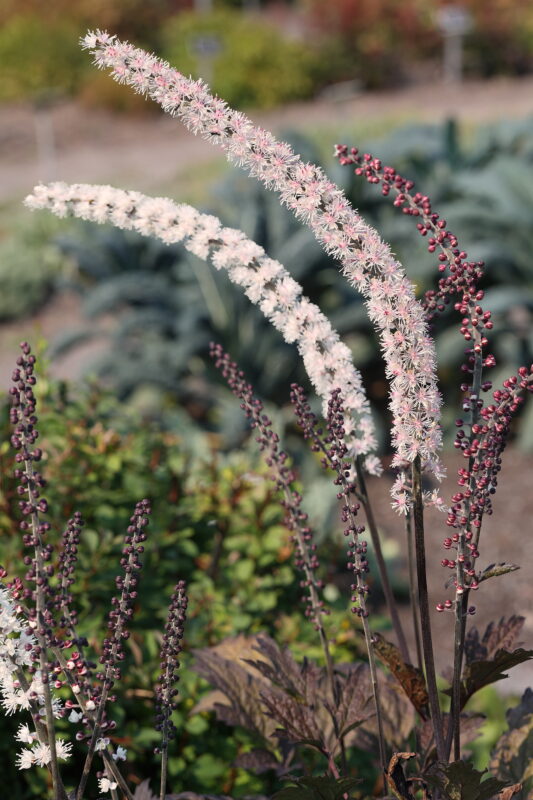
Starting off our list is the striking Actaea simplex ‘James Compton’, commonly known as baneberry. This perennial plant is a favorite among gardeners for its deep purple foliage and stunning white flowers that bloom in late spring. The plant grows to about 3 feet in height, making it a great mid-sized addition to any shade garden.
One of the standout features of ‘James Compton’ is its exceptional hardiness. It thrives in the shade and is well-suited to the woodlands of New England. Baneberry prefers rich, well-drained soil, and while it can tolerate moist conditions, it’s important not to let it sit in water. As an added bonus, baneberry produces bright red berries in the fall, which can be both ornamental and attractive to wildlife.
To maintain the lush appearance of baneberry, make sure to provide regular watering, particularly during dry spells. A layer of mulch will help retain soil moisture and keep the root system cool. However, caution is advised as the berries are toxic if ingested, so it’s better to place them where children and pets cannot access them.
Asarum europaeum (European Wild Ginger)
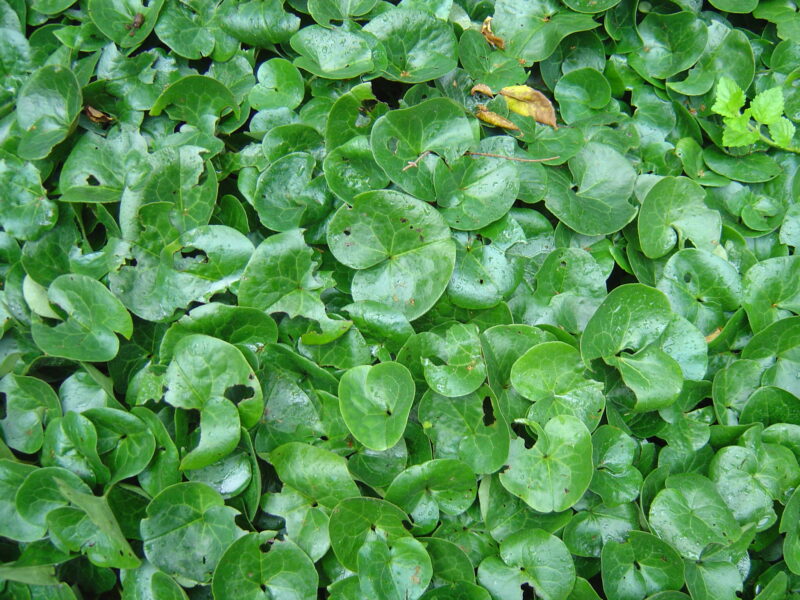
Asarum europaeum, or European wild ginger, is a beautiful groundcover plant that brings a unique charm to shady areas. It features heart-shaped, glossy leaves that form a dense mat, effectively suppressing weeds while providing a lush green backdrop in the garden. The plant blooms small, cup-shaped, brownish-purple flowers that are not showy, but their unique appearance adds a touch of subtlety to the landscape.
Wild ginger is particularly appealing for its adaptability to different soil types, though it thrives in rich, well-drained soils. It prefers moist environments, making it a terrific choice for woodland gardens or shady, humid areas that receive dappled sunlight.
This perennial plant requires minimal maintenance. Regular watering during periods of drought will keep its leaves vibrant. Simply trimming away any brown or damaged leaves in early spring can promote healthy new growth.
Athyrium filix-femina (Lady Fern)
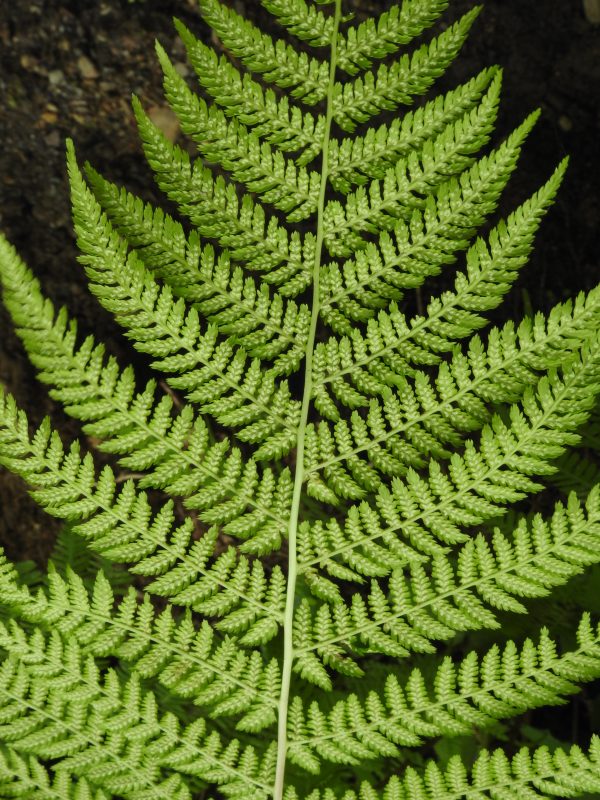
Athyrium filix-femina, better known as lady fern, is a quintessential fern that adds grace and elegance to shade gardens. Its finely divided fronds can grow between 18 to 36 inches tall, creating a beautifully layered appearance when planted in groups. This perennial fern is particularly prized for its soft texture and delicate, lace-like foliage, which flourishes in dark, moist conditions.
Lady fern is quite tolerant of various soil types but performs best in rich, humus-laden soil. It thrives in full shade to partial shade, allowing it to flourish under tree canopies, on slopes, or in shaded beds.
To keep lady ferns healthy, ensure they are consistently watered, especially during dry spells. A layer of compost or leaf mulch will enrich the soil and help retain moisture, promoting robust growth. Lady fern can also spread through rhizomes, so be prepared for self-seeding if you want to keep it well-contained.
Athyrium niponicum var. pictum (Painted Lady Fern)
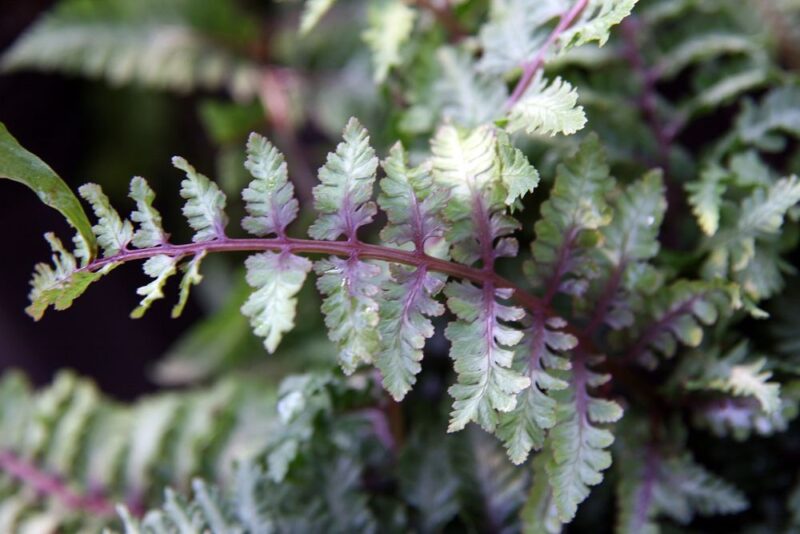
For those looking to add a splash of color to their shade garden, consider Athyrium niponicum var. pictum, or painted lady fern. This delightful fern is known for its striking fronds adorned with silver-gray hues and deep green accents. The contrasting colors make it a standout choice for any shaded area, enhancing both the texture and visual appeal of the garden.
Painted lady fern thrives in well-drained, moist soils and prefers partial to full shade. It’s an excellent companion for hostas and other shade-loving plants, providing a vibrant backdrop with its distinctive foliage.
Ensure the soil remains consistently moist, as painted lady ferns dislike dry conditions. Feeding the ferns with a balanced, slow-release fertilizer in early spring can help promote healthy growth. Apart from that, they require minimal maintenance, making them a great choice for beginners.
Dicentra spectabilis (Bleeding Heart)
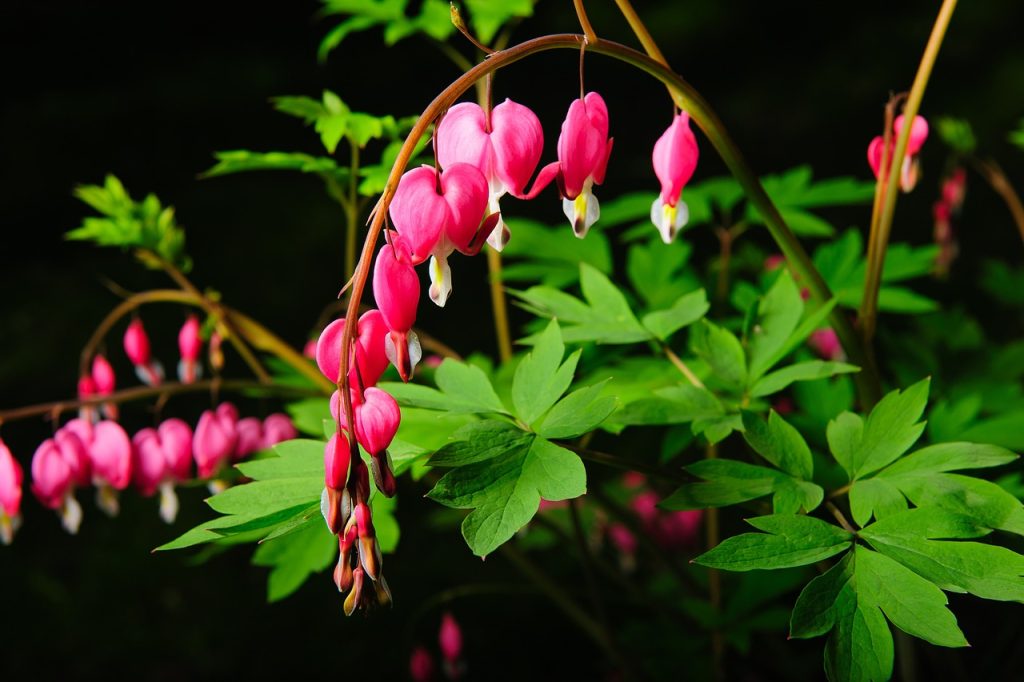
Dicentra spectabilis, better known as bleeding heart, is a classic shade garden perennial. Its unique heart-shaped flowers dangle gracefully from arching stems, creating a delightful display in early spring. Bleeding hearts flourish in moderately moist, well-drained soil and prefer shaded areas, making them perfect for New England gardens.
The plant typically grows 2 to 3 feet tall and wide, offering a beautiful mid-height that allows it to work well alongside shorter groundcovers and taller shrubs alike. It blooms in various colors, including pink, white, and even yellow, providing visual interest during its flowering period.
Bleeding hearts require consistent moisture during the growing season, so be sure to provide regular watering, especially in drier months. This perennial plant can go dormant in late summer; once it has finished blooming, allow the leaves to die back naturally, as they will nurture the roots for next season’s growth.
Galium odoratum (Sweet Woodruff)
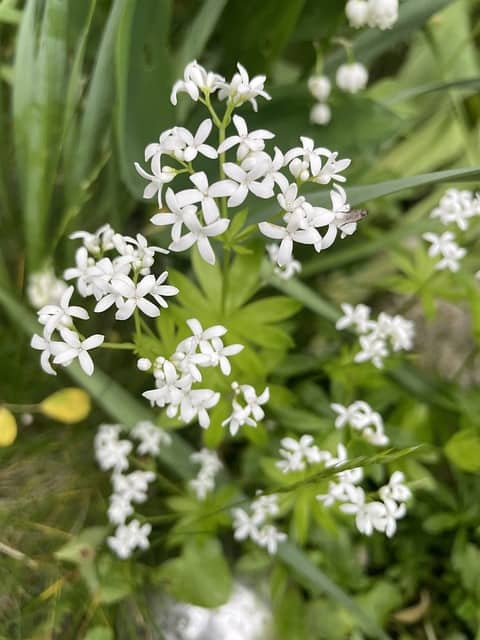
Galium odoratum, or sweet woodruff, is a charming groundcover plant known for its sweet-scented leaves and delicate white flowers. This perennial thrives in shady areas, where it can blanket the ground with its lush growth. Sweet woodruff makes a delightful addition to the garden, especially in woodland settings.
The plant typically grows to a height of 6 to 12 inches, forming a thick mat that suppresses weeds. Its aromatic foliage is not only pleasant for humans but also attracts pollinators to your garden.
Sweet woodruff is quite low-maintenance and tolerant of various soil types, although it prefers relatively moist, well-drained conditions. Regular watering is recommended during dry spells. A light pruning in early spring can help maintain its shape and encourage new growth.
Geranium macrorrhizum ‘Czakor’ (Cranesbill)
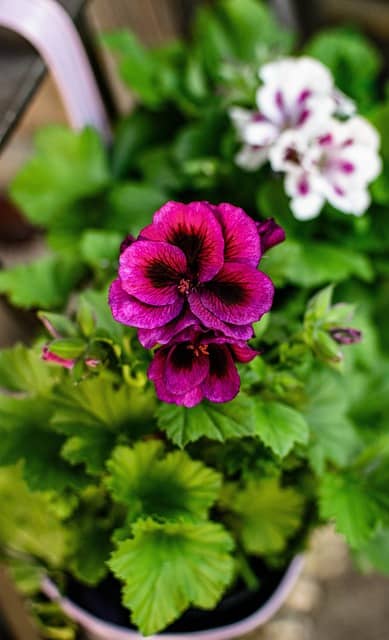
Geranium macrorrhizum ‘Czakor’, often referred to as cranesbill, is a robust perennial with bright, deeply lobed foliage and beautiful pink flowers that bloom in late spring. This variety is especially admired for its striking leaf color, which turns to shades of red and orange in the fall, adding further seasonal interest to your shade garden.
Cranesbill is known for its resilience and adaptability, thriving in various soil types, including clay and sandy soils. It can tolerate dry spells and is particularly good at naturalizing in shaded areas, making it ideal for low-maintenance gardens.
Cranesbill enjoys well-drained soil and can tolerate partial shade, though it will produce more blooms with some sun. To ensure a tidy appearance, remove spent flowers and any dead or damaged leaves as they occur.
Hakonechloa macra ‘Aureola’ (Hakone Grass)
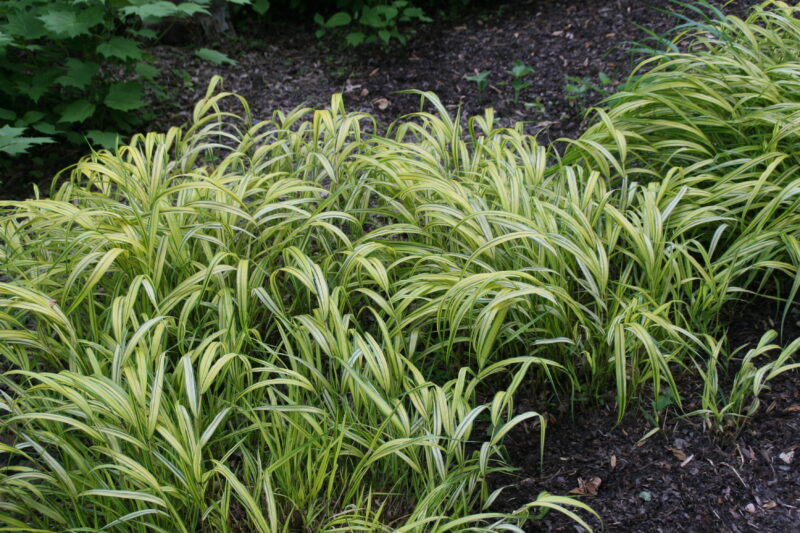
Hakonechloa macra ‘Aureola’, popularly known as hakone grass, is one of the most visually striking ornamental grasses suitable for shade gardens. This grass boasts cascading green and gold striped leaves, forming a graceful mound that sways gently in the breeze. It makes an excellent choice for softening edges and adding texture to shady borders.
Hakone grass grows well in moist, rich soil with good drainage. It thrives in partial to full shade, making it a wonderful candidate for those areas with heavy cover.
Ensure that hakone grass has consistent moisture, especially during hot spells. An addition of organic mulch will help retain soil moisture and keep weeds at bay. This grass also benefits from occasional trimming to maintain a neat appearance and encourage new growth.
Matteuccia struthiopteris (Ostrich Fern)
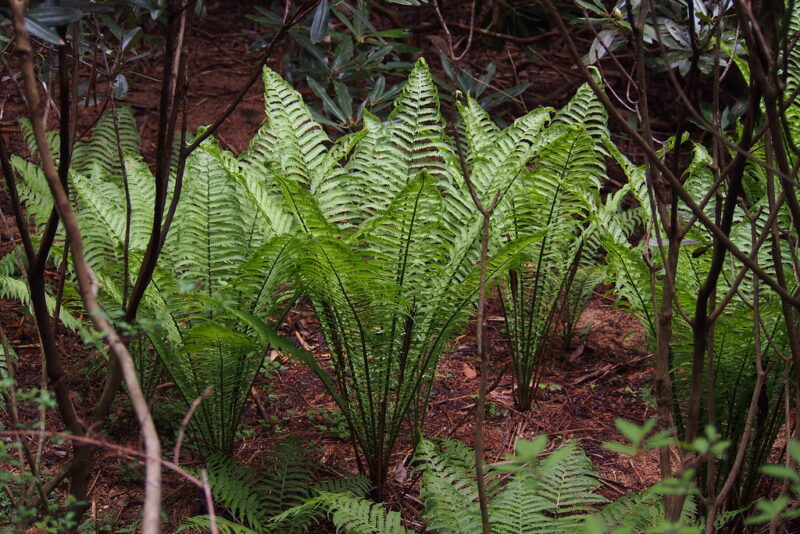
Matteuccia struthiopteris, known as ostrich fern, is an iconic species often found in shaded woodlands. Its tall, feathery fronds resemble the plume of an ostrich, creating a dramatic statement in any garden. Ostrich fern can reach heights of up to 4 feet, providing a stunning focal point in a shady area.
This fern thrives in moist, rich soil and prefers partial to full shade, making it ideal for New England gardens under tree canopies where moisture is relished.
Keep the soil consistently damp during the growing season to ensure optimal growth. Regularly remove any dead or brown fronds as needed. Ostrich fern is relatively low-maintenance and can spread easily; control its spread by dividing the clumps every few years if needed.
Polygonatum odoratum ‘Variegatum’ (Solomon’s Seal)
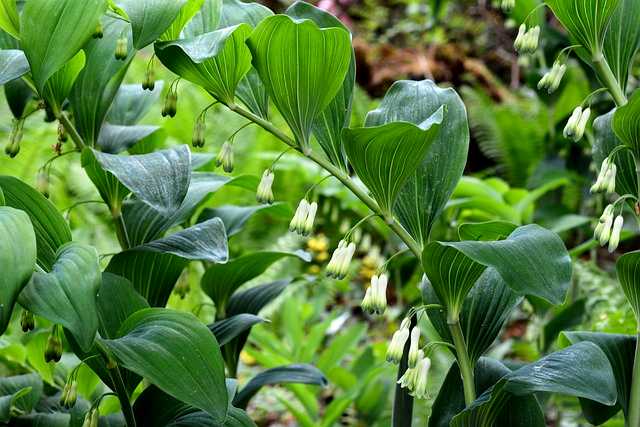
Polygonatum odoratum ‘Variegatum’, or variegated Solomon’s seal, is a striking perennial with arching stems and unique, bell-shaped flowers. Its variegated leaves provide a delightful contrast to the green backdrop often found in shady gardens. The plant typically reaches heights of about 12 to 24 inches, making it an excellent choice for filling in spaces at a lower level with visual interest.
This Solomon’s seal cultivates in rich, well-drained soil and prefers partial to full shade. The blooms emerge in late spring and provide a beautiful palette of white and green hues.
Ensure consistent moisture, particularly during dry conditions, and provide a layer of mulch to retain moisture and suppress weeds. Deadheading spent flowers can help maintain its aesthetic, and a light pruning of fronds at the end of the season can promote healthy growth for years to come.
Brunnera macrophylla (Siberian Bugloss)
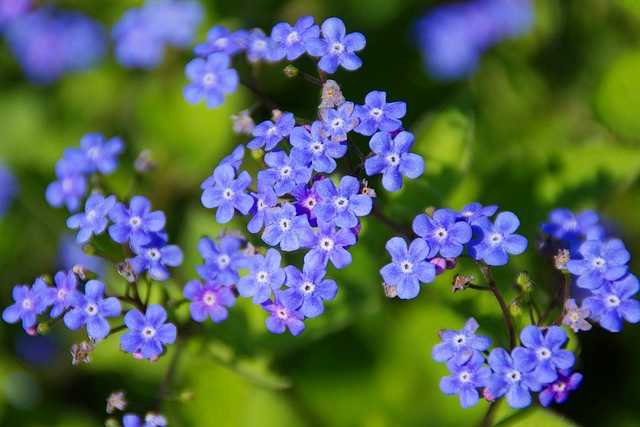
Brunnera macrophylla, or Siberian bugloss, is a delightful perennial known for its stunning blue flowers that bloom in early spring. With its large, heart-shaped leaves and vivid blossoms, it creates an enchanting scene in any shade garden. Siberian bugloss typically grows to about 12-18 inches in height and makes a fantastic ground cover.
This plant thrives in humus-rich, moist soil and prefers partial to full shade, making it well-suited for woodland gardens. Its robust leaves provide excellent contrast against the delicate flowers, making it a wonderful choice to mix with ferns and other ground covers.
Regular watering is crucial to keep Siberian bugloss looking its best, especially during dry spells. It benefits from light pruning to remove any dead foliage and allows for new growth. Keep in mind that while it’s resistant to most pests and diseases, it’s important to provide adequate space to allow its foliage to flourish.
Hosta (Plantain Lily)
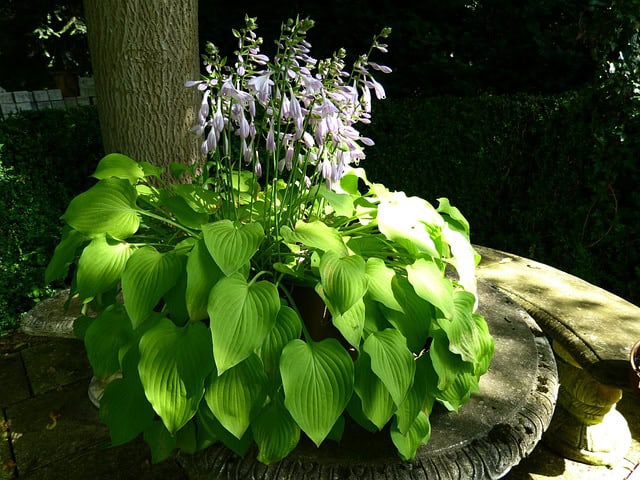
Hostas are a must-have in any shade garden due to their incredible versatility and beauty. These perennial plants come in a plethora of sizes, colors, and leaf shapes—ranging from deep blue to golden yellow foliage—and their stunning flowers add vertical interest to the garden design. Depending on the variety, hostas can reach heights of 12 inches to several feet.
Hostas thrive in rich, well-draining soil and prefer partial to full shade. Although they’re known to tolerate some sun, too much direct sunlight can lead to leaf scorch, so keeping them in the shade is ideal.
Keep hostas well-watered, especially during dry spells, as they are quite thirsty plants. Mulching around the base retains moisture and suppresses weeds. It’s important to keep an eye out for slugs, which can be attracted to hosta plants; various organic methods can be employed to control these pests.
Astilbe
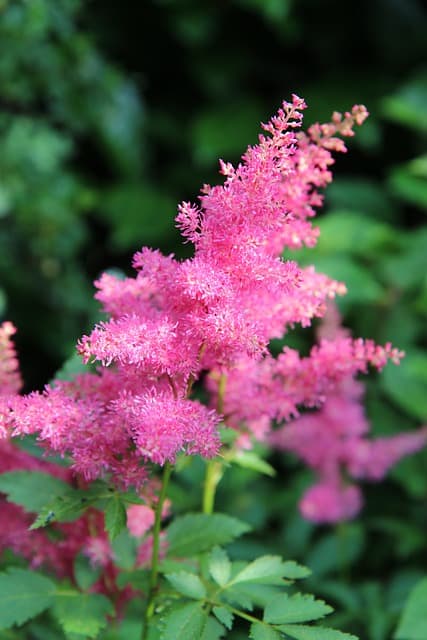
Astilbe is another stellar shade-loving perennial that deserves a spot in your garden. Known for its feathery plumes of pink, white, red, or purple flowers, astilbe adds pops of color to the shade with its striking leaves and blooms. Depending on the variety, it can grow anywhere from 12 to 36 inches tall.
This plant flourishes in moist, well-drained soil and prefers partial to full shade, making it an excellent choice for gardeners looking to enhance the moist areas of their landscape.
Astilbe thrives on consistent moisture, so regular watering is essential. Trimming the flower stalks in late summer will encourage new growth and keep your garden looking neat. Like other shade plants, adding mulch will help retain soil moisture and provide essential nutrients.
Helleborus (Hellebore)
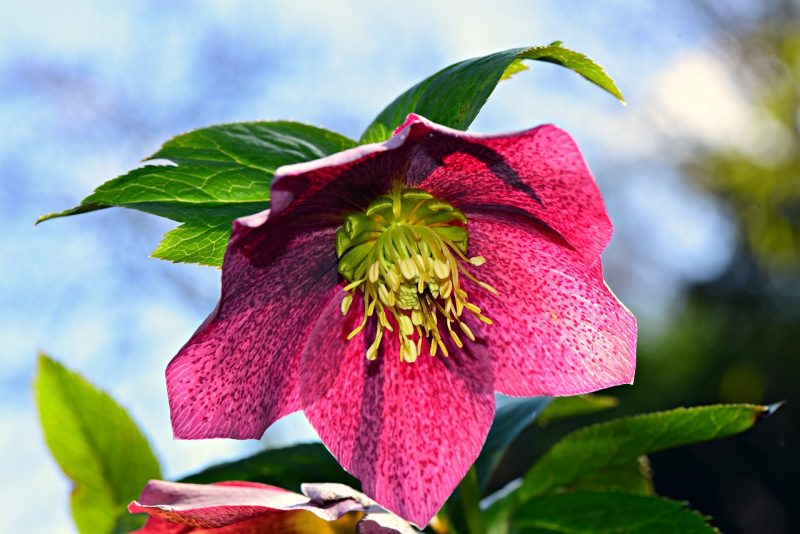
Helleborus, commonly known as hellebores or Lenten roses, are perfect for early-spring blooms in a shady setting. These perennials are known for their leathery leaves and charming flowers that bloom in shades of white, pink, and purple. Hellebores are often one of the first plants to bloom in the New England garden, making them an exciting addition for early-season interest.
Preferring well-drained soil and partial to full shade, hellebores are well-suited for woodland gardens. They can live for many years with proper care, making them a practical investment for your shade garden.
To ensure hellebores thrive, water them regularly during dry spells and mulch around the base to retain moisture and suppress weeds. It’s also helpful to remove the old foliage in late winter or early spring to reveal the new growth and improve air circulation.





